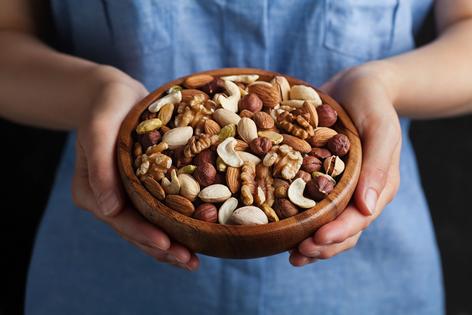Environmental Nutrition: The science behind snacking
The traditional three-square meals a day eating pattern has given way to lots of noshing. In fact, 50 percent of all eating occasions are snacks. And it's not just millennials and young adults who are eating between meals. Even 43 percent of baby boomers say they can't get through a day without a snack. All this snacking provides about one-quarter of our daily calorie intake.
There are many reasons for the increase in snacking and the decrease in traditional meals, says Shelley Balanko, Ph.D., senior vice president of the Hartman Group, Inc, a food culture consultancy. Not only is food available at every type of gathering or on the way to run any errand, but there's increased variety available too, making self-restraint much harder, she explains. Time constraints are eating into traditional meals, as well.
Younger adults struggle to balance work and family demands, and with more time on their hands, retired folks are often on the go. The decline in meal planning and cooking skills has shifted the balance of meals and snacks too. So have the interests in better nutrition and experimenting with new flavors.
About 30 percent of consumers snack as an opportunity to try out new flavors, including ethnic foods. And just over half of all snacking occasions are aimed at better nutrition such as an opportunity to get more fruits and vegetables, says Balanko. Unfortunately, she adds, 22 percent of all snacking is aimless, such as snacking because of boredom or to cope with stress.
Make snacks work for you
Become a planner. According to research involving over 2,700 adults and published in a 2014 issue of the Journal of the American College of Nutrition, consumers eat 59 percent of their snacks without planning. Yet typically, planning leads to better choices. Some people find it helpful to create a list of suitable snacks and to choose from that list only.
Fill in nutritional gaps. Think about what's missing from your meals. Are you eating enough protein, sufficient fiber, adequate dairy, ample fruits and vegetables? Examine each food group or nutrient of concern, and make an informed decision about what your body needs at snack time.
Avoid aimless snacking. With more than one-fifth of snacks serving no good purpose, it's smart to pay attention to your habits as well as emotional cues that might lead you to pointless, and potentially harmful, eating. There are more productive strategies than eating to deal with boredom and unpleasant emotions. Try some of these or create your own list.
--Play with your pet
...continued







